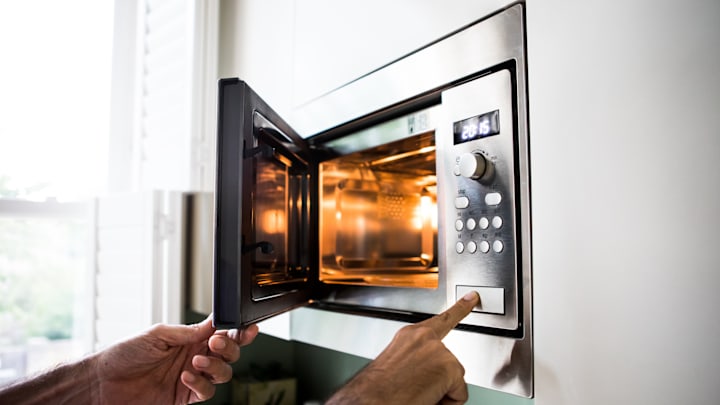The microwave holds a unique place in modern life: we use it all the time, it sometimes makes things blow up, and very few of us can really and truly, hand-on-heart, say we know how it works.
So it’s probably not out of the question to assume you haven’t cleaned yours in a while. Even if you try to do it weekly, you may not be doing it enough, as that thing is almost undoubtedly awash with filth. A new study involving an in-depth examination of 30 regularly used microwaves found that there were nearly 750 different types of radiation-resistant bacteria lurking within them.
The study, conducted in Valencia, Spain, and recently published in Frontiers in Microbiology, found that the microbiomes in microwave ovens were dominated by Proteobacteria, Firmicutes, Actinobacteria, and Bacteroidetes—all bacteria found on human skin. Researchers also discovered that Klebsiella and Brevundimonas, two bacteria types associated with food-borne illnesses, grew in some of the cultured samples they took from microwaves.
Though these everyday household appliances can seem like an unlikely place for anything to thrive given all the radiation involved in the heating process, their radiation is non-ionizing, meaning it doesn’t change the form of any of the cells or atoms it encounters. Microwaves heat food up by vibrating the molecules within it at such a speed that they heat up, but they can’t actually get hot enough to kill all bacteria, some of which are linked to food-borne illness.
The Right Way to Clean Microwaves
Nonetheless, these microbes are all pretty hardy. They’re “extremophiles”— organisms that can survive and even thrive in extreme physical or geochemical conditions. If you aren’t a fan (or an extremophile-phile yourself, if you will) and would rather your microwave didn’t play host to any forms of unkillable bacteria, you could always just clean the damned thing.
Cleaning a microwave is less trouble than it seems. You don’t need to use industrial amounts of bleach or anything like that. Simply mix 2 tablespoons of white vinegar into 2 cups of water, put it in a microwaveable cup or bowl, then nuke it for 5 minutes.
The mixture should start to boil and steam over. Leave it for 15 minutes so all that hot, acidic steam has time to work its magic. Then, a wipe with a microfiber cloth should be enough to dislodge anything stuck on. You can remove all the removable parts—the turntable and plate—and wipe those down carefully as well. Then, just dip a sponge into the vinegar solution and use it to clean the outside of the microwave.
Ideally, you should be cleaning your microwave like this after every use. But let’s be honest: Most of us aren’t going to do that. Instead, most cleaning experts recommend doing it at least once a week, depending on how often you use the appliance. Given that bacteria is everywhere, including within our bodies—there is about a 1.3:1 ratio of body cells to bacteria—it never hurts to stay on the safe side.
Discover More Household Cleaning Tips and Hacks Below:
